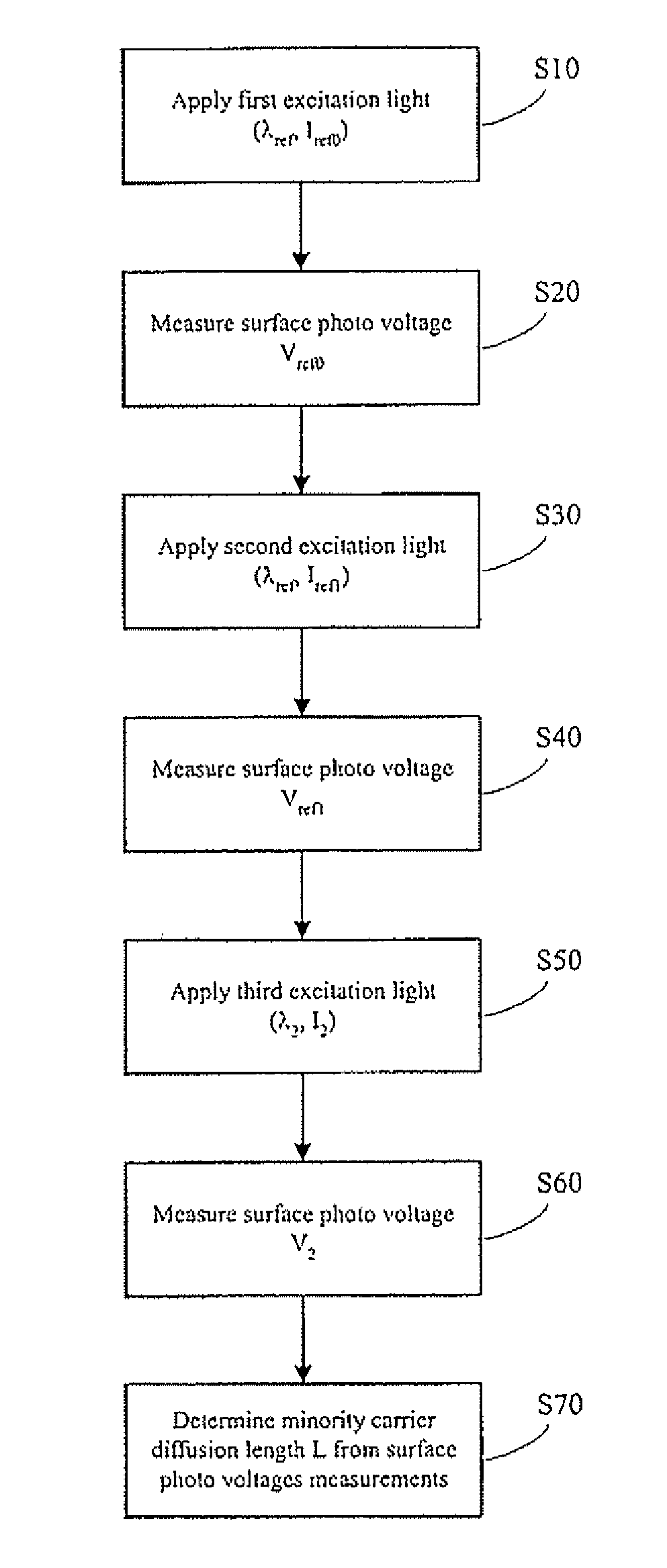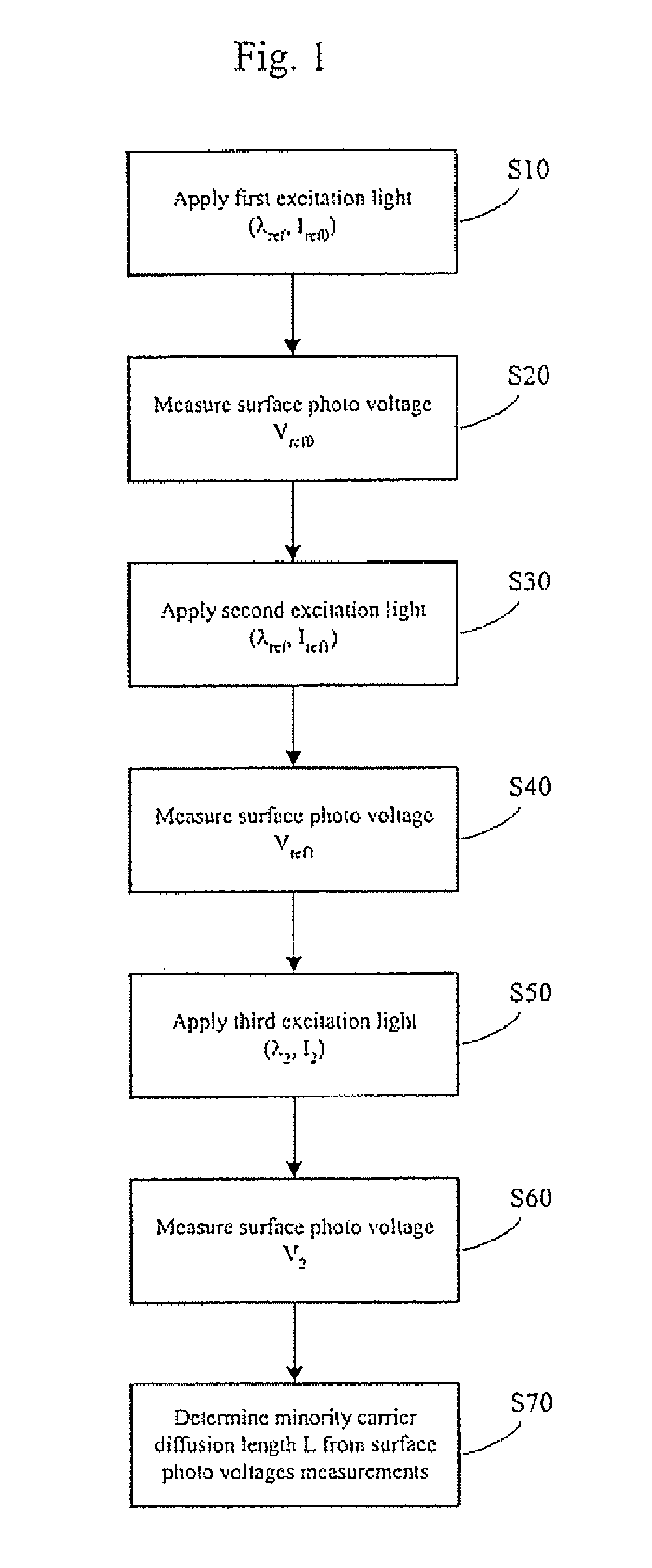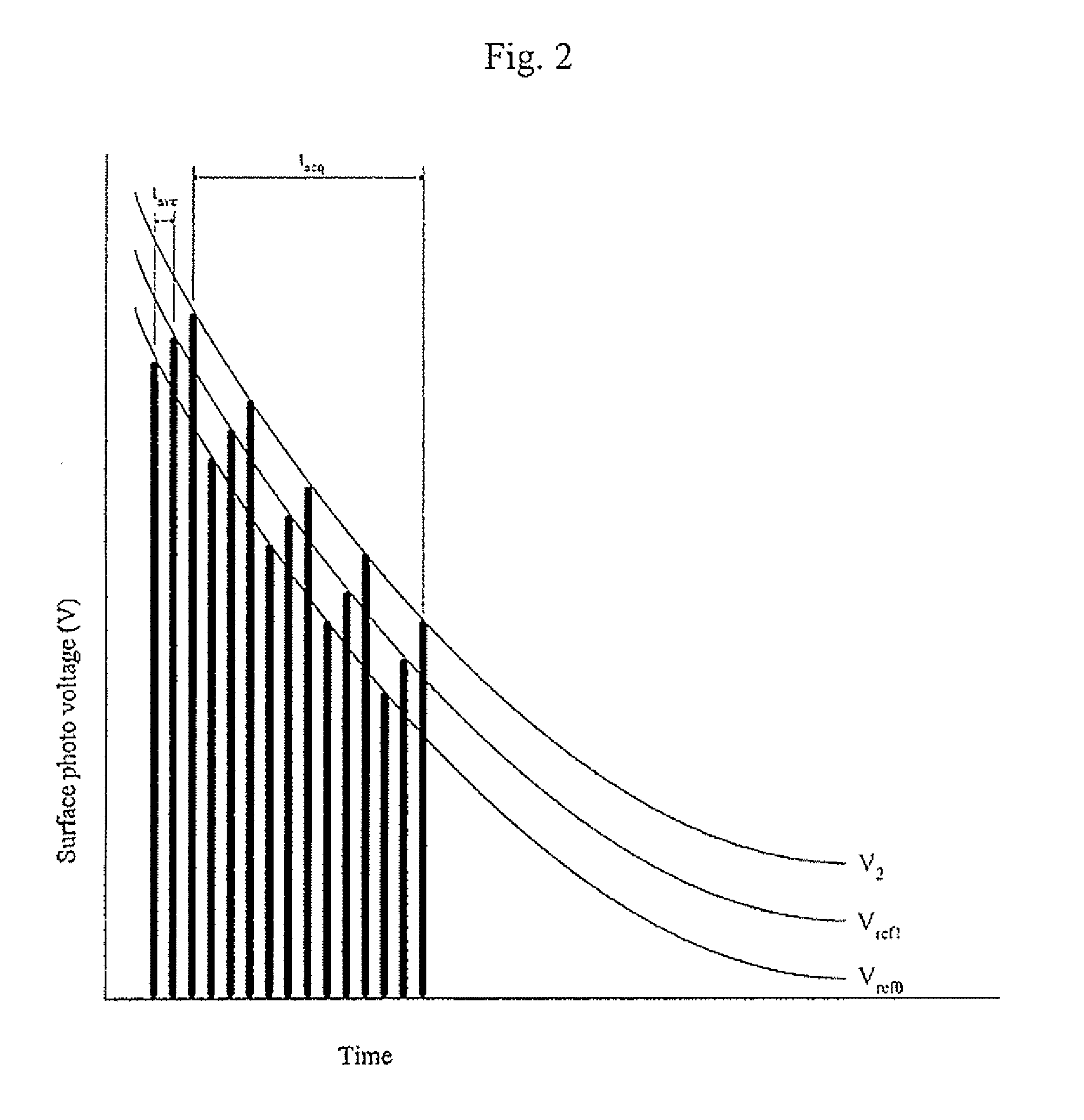Method for determining a minority carrier diffusion length using surface photo voltage measurements
a surface photo voltage and minority carrier technology, applied in the field of semiconductor materials, can solve the problems of inability to measure the carrier concentration n directly, the parameter a and s are not stable, and the contamination of the carrier is not easy to d
- Summary
- Abstract
- Description
- Claims
- Application Information
AI Technical Summary
Benefits of technology
Problems solved by technology
Method used
Image
Examples
Embodiment Construction
[0056]The particulars shown herein are by way of example and for purposes of illustrative discussion of the embodiments of the present invention only and are presented in the cause of providing what is believed to be the most useful and readily understood description of the principles and conceptual aspects of the present invention.
[0057]One premise of the present invention is that equation (7) can be rewritten as:
L=(d2−d1CR) / (CR−1), (9)
where C=I2 / I1 and R=N1 / N2. Further, if N1 is referred to as Nref0 and I1 is referred to as Iref0, then R can be expressed as R=Nref0 / N2 and C can be expressed as C=I2 / Iref0.
[0058]A process of determining the minority carrier diffusion length L of a material is described below with reference to the flowchart shown in FIG. 1.
[0059]First, a first excitation light having a reference wavelength λref and a first photon flux Iref0 is applied to a subject material (step S10), generating a carrier concentration Nref0, and a resulting surface photo voltage V...
PUM
| Property | Measurement | Unit |
|---|---|---|
| diffusion length | aaaaa | aaaaa |
| first photon flux | aaaaa | aaaaa |
| first wavelength | aaaaa | aaaaa |
Abstract
Description
Claims
Application Information
 Login to View More
Login to View More - R&D
- Intellectual Property
- Life Sciences
- Materials
- Tech Scout
- Unparalleled Data Quality
- Higher Quality Content
- 60% Fewer Hallucinations
Browse by: Latest US Patents, China's latest patents, Technical Efficacy Thesaurus, Application Domain, Technology Topic, Popular Technical Reports.
© 2025 PatSnap. All rights reserved.Legal|Privacy policy|Modern Slavery Act Transparency Statement|Sitemap|About US| Contact US: help@patsnap.com



